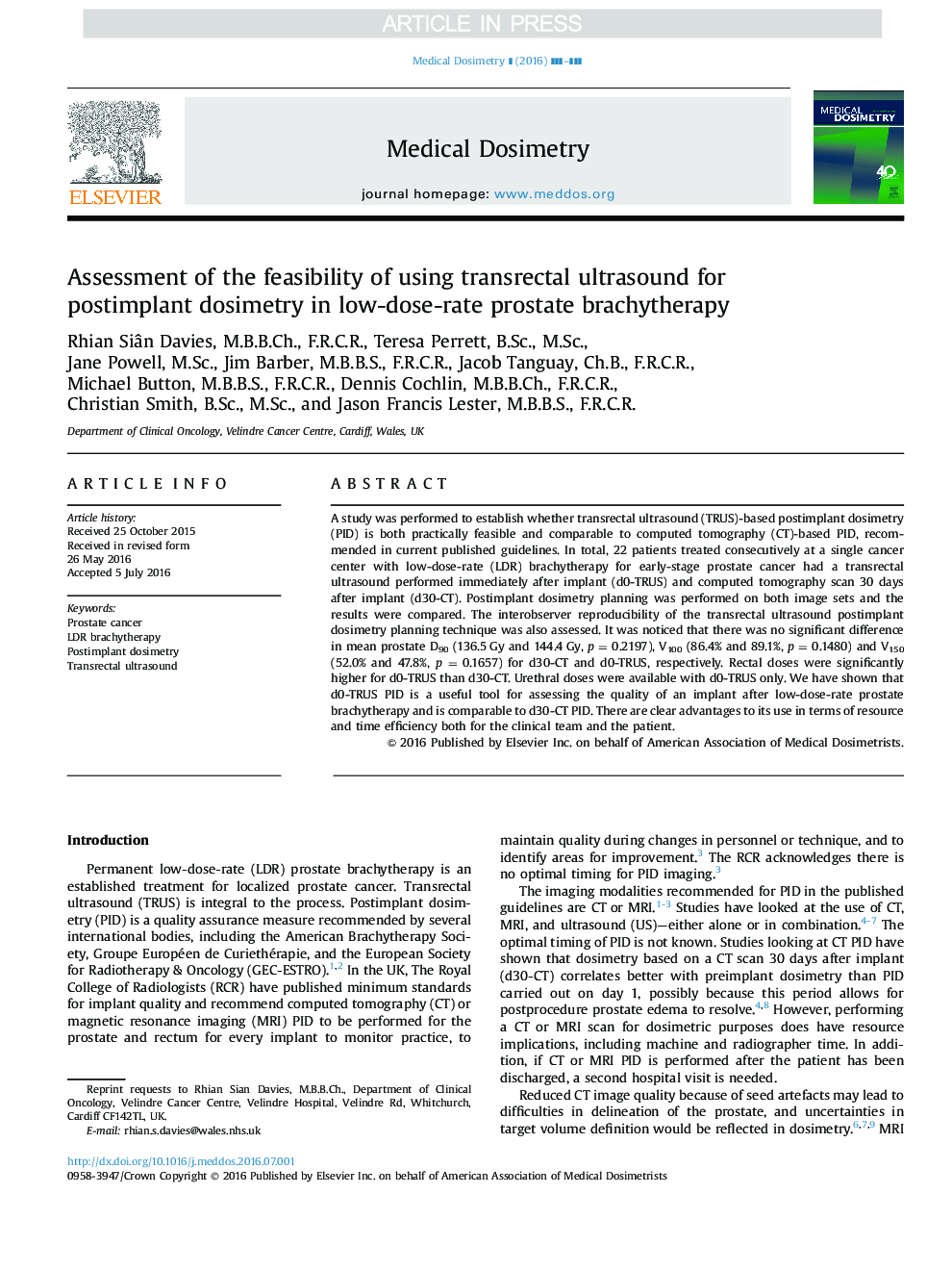| کد مقاله | کد نشریه | سال انتشار | مقاله انگلیسی | نسخه تمام متن |
|---|---|---|---|---|
| 5498134 | 1399968 | 2016 | 6 صفحه PDF | دانلود رایگان |
عنوان انگلیسی مقاله ISI
Assessment of the feasibility of using transrectal ultrasound for postimplant dosimetry in low-dose-rate prostate brachytherapy
ترجمه فارسی عنوان
ارزیابی امکان سنجی استفاده از سونوگرافی ترانسکتال برای دوزیمتری پسیمپلانت در برویتراپی پروستات با دوز کم
دانلود مقاله + سفارش ترجمه
دانلود مقاله ISI انگلیسی
رایگان برای ایرانیان
کلمات کلیدی
موضوعات مرتبط
مهندسی و علوم پایه
فیزیک و نجوم
تشعشع
چکیده انگلیسی
A study was performed to establish whether transrectal ultrasound (TRUS)-based postimplant dosimetry (PID) is both practically feasible and comparable to computed tomography (CT)-based PID, recommended in current published guidelines. In total, 22 patients treated consecutively at a single cancer center with low-dose-rate (LDR) brachytherapy for early-stage prostate cancer had a transrectal ultrasound performed immediately after implant (d0-TRUS) and computed tomography scan 30 days after implant (d30-CT). Postimplant dosimetry planning was performed on both image sets and the results were compared. The interobserver reproducibility of the transrectal ultrasound postimplant dosimetry planning technique was also assessed. It was noticed that there was no significant difference in mean prostate D90 (136.5Â Gy and 144.4Â Gy, p = 0.2197), V100 (86.4% and 89.1%, p = 0.1480) and V150 (52.0% and 47.8%, p = 0.1657) for d30-CT and d0-TRUS, respectively. Rectal doses were significantly higher for d0-TRUS than d30-CT. Urethral doses were available with d0-TRUS only. We have shown that d0-TRUS PID is a useful tool for assessing the quality of an implant after low-dose-rate prostate brachytherapy and is comparable to d30-CT PID. There are clear advantages to its use in terms of resource and time efficiency both for the clinical team and the patient.
ناشر
Database: Elsevier - ScienceDirect (ساینس دایرکت)
Journal: Medical Dosimetry - Volume 41, Issue 4, Winter 2016, Pages 290-295
Journal: Medical Dosimetry - Volume 41, Issue 4, Winter 2016, Pages 290-295
نویسندگان
Rhian Siân M.B.B.Ch., F.R.C.R., Teresa B.Sc., M.Sc., Jane M.Sc., Jim M.B.B.S., F.R.C.R., Jacob Ch.B., F.R.C.R., Michael M.B.B.S., F.R.C.R., Dennis M.B.B.Ch., F.R.C.R., Christian B.Sc., M.Sc., Jason Francis M.B.B.S., F.R.C.R.,
